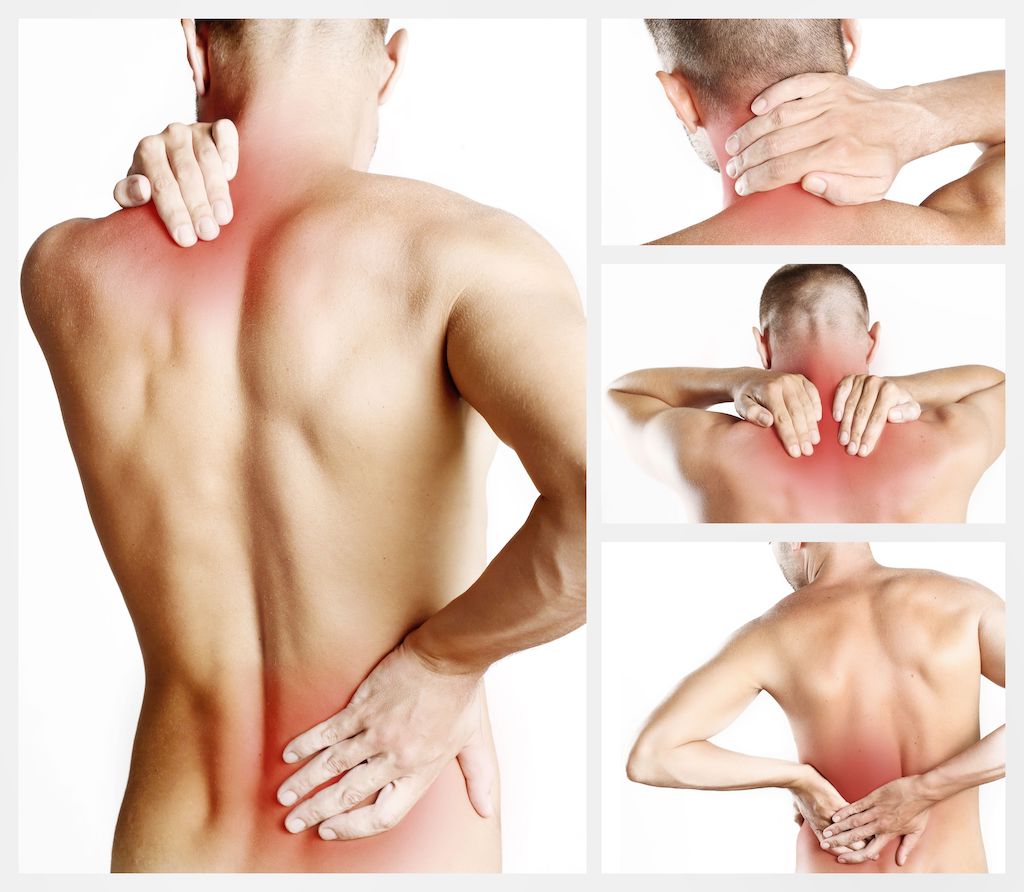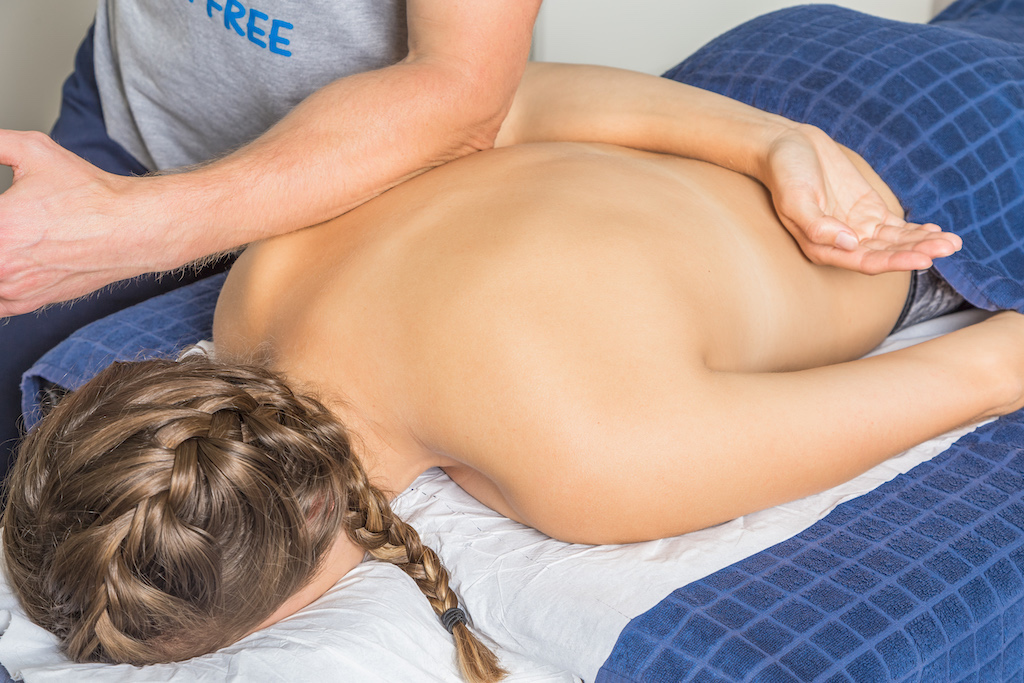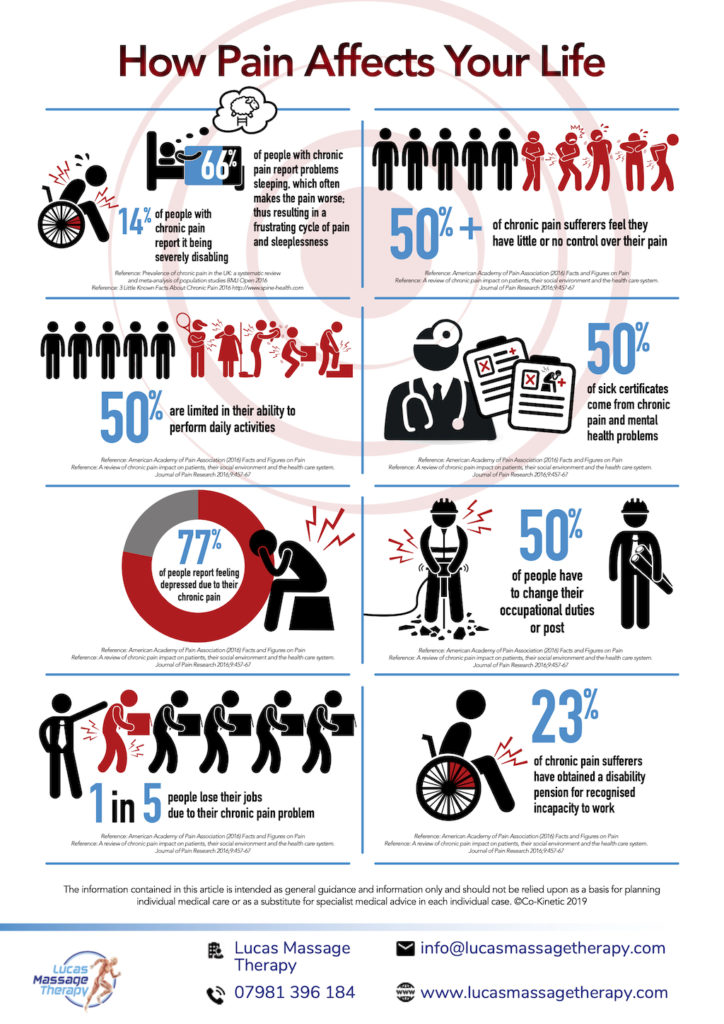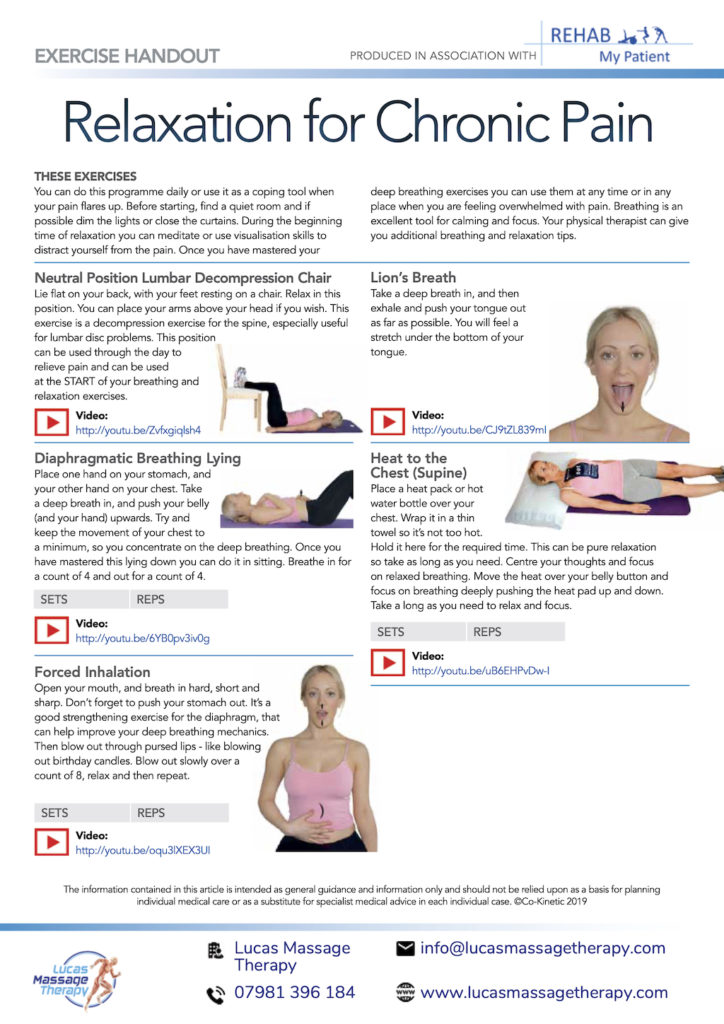The Best 5 Skills for Chronic Pain Management
Experiencing chronic pain every day can be physically and emotionally draining, causing intense discomfort and affecting your mood and overall sense of wellness. The abundance of information available on how to manage it can be overwhelming, making it difficult to determine where to begin. Hence, we have compiled the following resources to provide guidance.
Chronic Pain Management: Good Understanding
Understanding your chronic pain and why it exists is crucial for effective management. It helps you gain insight into how pain interacts with your body and environment, enabling you to develop coping strategies. With this knowledge, you can navigate through the overwhelming amount of information available on pain management and make informed decisions about your care. Embracing a good understanding of chronic pain empowers you to take control of your well-being and improves your overall quality of life. Seek guidance from your therapist or healthcare professional for additional resources on this topic.
Chronic Pain Management: Relaxing
Your pain experience can be affected by your emotions, as explained in our informational brochure Comprehending Chronic Pain. When you consistently feel stressed and anxious about your pain, it actually amplifies the perception of pain in your body. Furthermore, prolonged high levels of stress can have negative implications for your overall well-being. Therefore, it is crucial to cultivate the ability to calm both your mind and body. By achieving a state of relaxation, you can effectively lower your stress levels, subsequently reducing the intensity of your pain.
Relaxing skills include: 1. Deep breathing 2. Meditation 3. Mindfulness 4. Yoga 5. Tai Chi
Chronic Pain Management: Accepting
Recognizing the intricate character of your pain aids in embracing it. Embracing does not imply surrender, but rather acknowledging the present circumstances, understanding what can and cannot be altered, and finding a path towards progress.
Chronic Pain Management: Balancing
To achieve a well-rounded and sustainable lifestyle, it is important to utilize certain strategies. Individuals who effectively manage their pain often establish a personalized routine that suits their needs, while also being adaptable during painful episodes. Pacing entails avoiding excessive activities and instead focusing on accomplishing tasks gradually, without overexertion. It is a delicate balance that allows for gradual progress without setbacks that might confine one to bed or lead to severe pain flare-ups. Taking a slow and steady approach is key, although it may initially prove challenging. It is crucial to be realistic about one’s abilities and avoid pushing too hard, even on good days, as overexertion will inevitably result in consequences.
Sleeping can be challenging due to anxiety and pain, but it is crucial for your body to heal and recover. Rested sleep also helps in managing emotions effectively. Many individuals dealing with pain often feel guilty about sleeping, as they perceive it as unproductive. However, it is important to assertively prioritize rest, manage time effectively (such as setting an alarm for a short afternoon rest), and maintain a balance between activity and rest. Structuring rest periods throughout the day is necessary to prevent overexertion, which could lead to disappointment in not being able to spend quality time with family in the evening.
Maintaining effective time management is crucial for balancing your daily activities and ensuring you have enough energy for both work and personal time. By keeping an activity diary, you can quickly identify tasks that may be overwhelming and areas where you can increase productivity. Breaking down larger tasks into smaller ones throughout the day or week can prevent exhaustion and setbacks. Consider your daily and weekly capacity, including factors like meetings, appointments, social engagements, and rest periods, such as afternoon naps. Adjusting your schedule accordingly will help you maintain a manageable routine. It’s important to recognize your limits and be comfortable saying no when necessary. Utilizing a simple activity tracker can assist you in monitoring your daily progress.
Setting goals is crucial for planning daily activities and ensuring their achievement. It is important to have both short-term goals, which can be accomplished within weeks, and long-term goals, which can be pursued over several months. For instance, a short-term goal could involve planting flower beds for the upcoming spring or gradually increasing the dog’s walk duration to 20 minutes. By adopting a pacing strategy, progress can be made gradually. Although the daily improvements may seem insignificant or easily forgotten, especially on challenging days, maintaining focus on a goal provides a sense of direction and purpose. To stay on track and achieve these goals, it is beneficial to keep a daily diary documenting pain levels and activity levels.

Chronic Pain Management: Managing
Having strategies, methods, and strategies to utilize during periods of intense pain is essential. Merely relying on pain medication is insufficient.
1. Engaging in activities that divert your attention from the pain can be highly effective. Distractions can involve activities such as knitting, painting, colouring, pottery, etc. Additionally, watching TV, playing video games, reading a book, or listening to music can serve as form of distraction. Visualization is another powerful technique. By directing your focus towards a non-painful part of the body and mentally altering its sensation, such as imagining your hand warming up, you can redirect your mind away from the source of pain.
2. Physical therapy should not be reserved solely for times of pain. Regular sessions can help regulate pain levels. However, during flare-ups, therapy can provide pain relief and reduce hypersensitivity. Physical therapy encompasses various treatments that can effectively manage chronic pain.
3. Physical activity is crucial for individuals living with chronic pain. It is important to incorporate gentle exercise into your treatment plan. Exercise helps to keep joints flexible and muscles strong, positively impacting both mental and overall health. Additionally, it aids in maintaining a healthy body weight. Seek guidance from your physical therapist to determine suitable activities. Consider options such as walking, swimming, gentle strength training, yoga, Pilates, or even chair yoga if getting up from the floor is challenging.
4. A nutritious diet consisting of foods with anti-inflammatory and antioxidant properties can naturally alleviate pain and promote cellular health. Maintaining a healthy diet also aids in weight management, particularly if your physical activity levels have decreased. By adopting a combination of healthy eating habits and regular exercise, you can effectively manage your weight and improve your self-perception, ultimately making it easier to cope with pain.
5. A change of environment, even when you may not feel inclined, can help alleviate pain. Venturing outside, breathing in the fresh air, taking a walk around the neighbourhood, or running errands in a different setting can all contribute to reducing your discomfort.
6. Joining a support group can provide valuable assistance in managing chronic pain. The experience of spending time with individuals who share your condition can be remarkably beneficial. Connecting with others who truly understand what you’re going through can bring relief and a sense of camaraderie. Sharing stories, ideas, concerns, and frustrations, and receiving empathy from fellow group members can be exceptionally helpful.
7. It can be challenging, but it’s important to ask for help when needed. Recognize your own limitations and seek assistance whenever possible. Pushing yourself to do something difficult can have negative consequences later on. Whether it’s requesting a chair after standing for a long time at a party, using a wheelchair at the supermarket or airport, or simply asking for occasional help with household chores, don’t hesitate to reach out for support.
8. Alternative therapies, such as acupuncture, hypnosis, or Reiki, may be considered. It is difficult to determine their effectiveness until you give them a try. Pain management is often likened to a 3-legged stool, comprising interventions (including specific coping techniques, yoga, physical therapy, and exercise, for instance), medication, and counselling. All three components are vital for stability; the absence of any will lead to instability. As you learn to pace your activities, achieve goals, relax, and develop coping mechanisms for pain, you will gradually realize that pain does not have to dominate your life.

Deep tissue massage – Chronic Pain Treatment Watford
This approach focuses on addressing spasms and persistent muscle tightness that may develop due to the stress of daily life. Muscle spasms or tension can also be a result of strains or sprains. The therapist applies direct pressure and friction to help alleviate the tension in your soft tissues, such as ligaments, tendons, and muscles.
Sports massage – Chronic Pain Treatment Watford
Sports massage is a form of therapy used to address chronic pain. It specifically focuses on enhancing athletic performance and is now considered an important component of a scientific approach to preparation, training, recovery, and injury management in sports. However, sports massage is not limited to athletes and can benefit individuals in both sporting and non-sporting contexts. It encompasses a variety of techniques, including petrissage, effleurage, vibration, compression, friction, and deep strokes. Additionally, there are more advanced techniques available such as muscle energy techniques, soft tissue release, myofascial release, and others.
A sports massage is used for wide-ranging conditions. It is believed that the following are some of the effects that massage has on the whole body. Muscular system, cardiovascular system, skeletal system, nervous system, urinary system, digestive system and lymphatic system. Sports massage as chronic pain management helps release muscle tension, reduce pain, break down adhesions and improve flexibility. By receiving a sports massage at Lucas Massage Therapy in Watford we will help with poor posture, release muscle tightness, decrease pain, increase muscle flexibility and improve recovery.
Chronic Pain Management

Chronic Pain Management – Managing Activity Levels
The way pain is influenced by a person’s emotions and expectations, and how pain, in turn, impacts their emotions, emphasizes the need for a balanced approach to activities. Avoiding burnout and excessive inactivity is crucial. Taking an active role in managing pain is essential to break the cycle of feeling worse and doing less. Identifying triggers that worsen pain and finding ways to minimize their occurrence is important. Additionally, learning strategies to cope with increased pain will enhance overall coping abilities. Planning the initiation and duration of activities, gradually progressing like an athlete in training, allows for personal satisfaction and gradual improvement.
Introducing activities in a deliberate and responsible manner through pacing is beneficial. Pacing proves effective as it maintains motivation through the accomplishment of small goals. It involves breaking tasks into manageable parts and taking breaks in between to rest and relax. By dividing activities this way, you can monitor your progress and well-being. Set realistic, specific, and measurable positive goals to track your progress. Prioritize your activities to achieve them in your preferred order. Additionally, completing the most important tasks first can be helpful if you encounter difficulties.
Exercise regularly to maintain fitness and distract yourself from concerns while potentially improving your well-being. Starting physical activity may be challenging if you’ve experienced pain for a long time, but the benefits outweigh inactivity. Determine your baseline, which is the amount and duration of activity you can do without causing a flare-up. This could be as simple as standing and cooking, driving, gardening, or walking the dog.
Utilize this baseline to plan your activity and gradually increase it, a method known as pacing. Pacing should not exacerbate your pain. You can increase activity by extending the time spent, repeating actions, holding exercises longer, increasing resistance or weight, or reducing rest intervals. Begin by gradually increasing the time spent on an activity, even if it seems minimal. It’s better to progress slowly and steadily than to rush and backtrack. Assess how your body responds to each increase and adjust accordingly.
Even when you feel good, avoid exceeding your daily target. Starting physical activity may be challenging if you’ve experienced pain for a long time, but the benefits outweigh inactivity. Determine your starting point, which is the amount and duration of activity you can do without causing a flare-up. This could be as simple as standing and cooking, driving, gardening, or walking the dog. Use this starting point to plan your activity and gradually increase it, a method known as pacing. Pacing should not worsen your pain.
Chronic Pain Management – Chronic Pain Exercises


